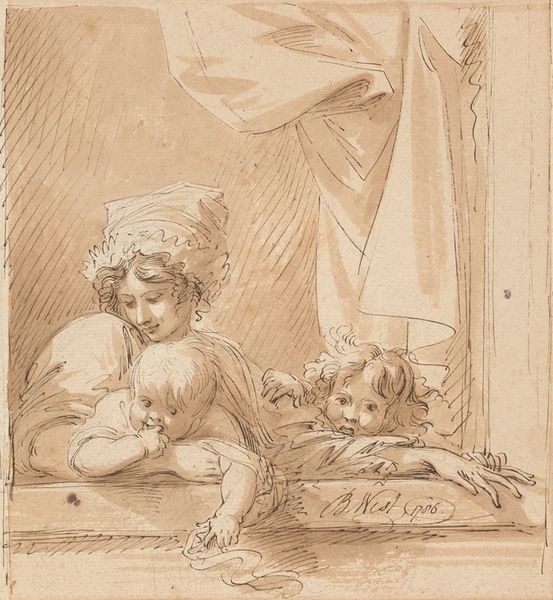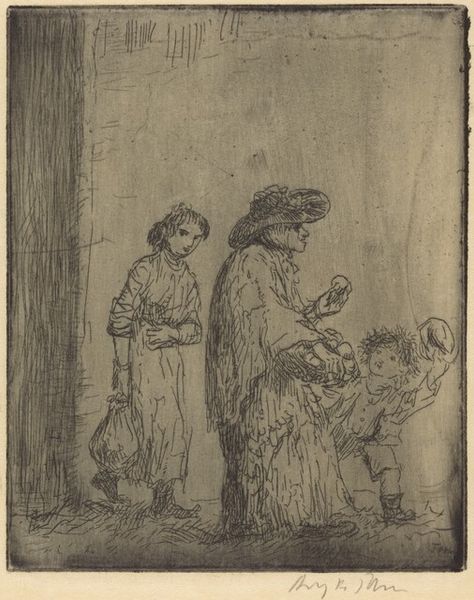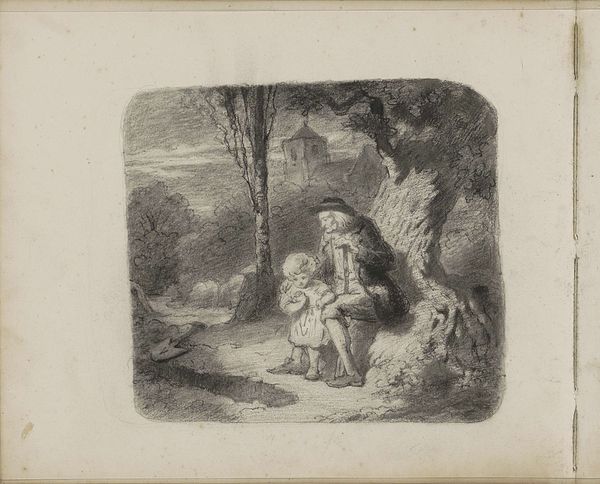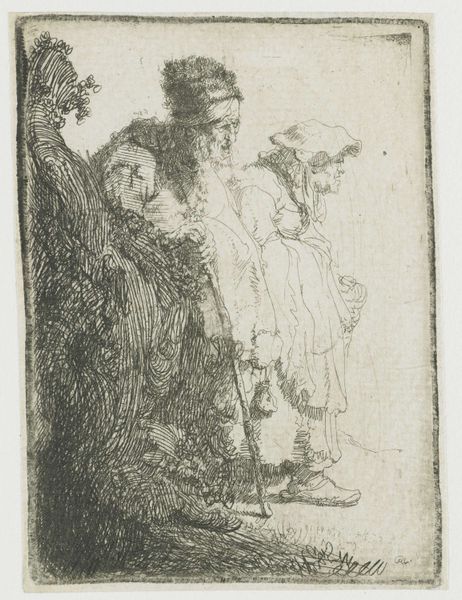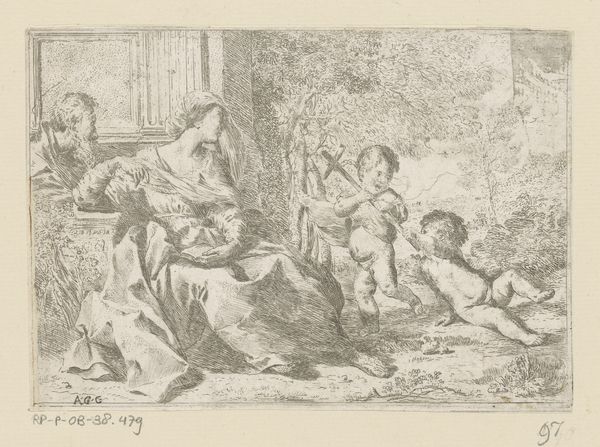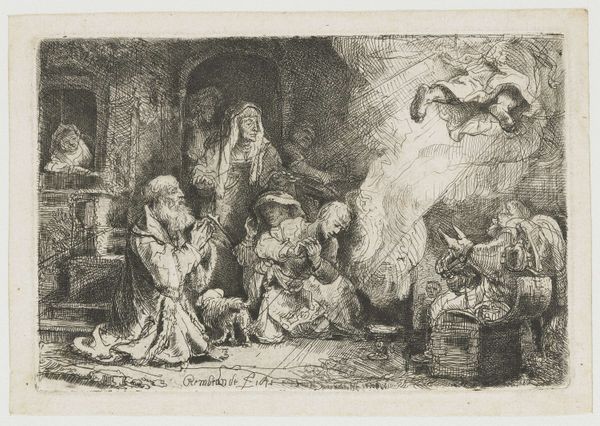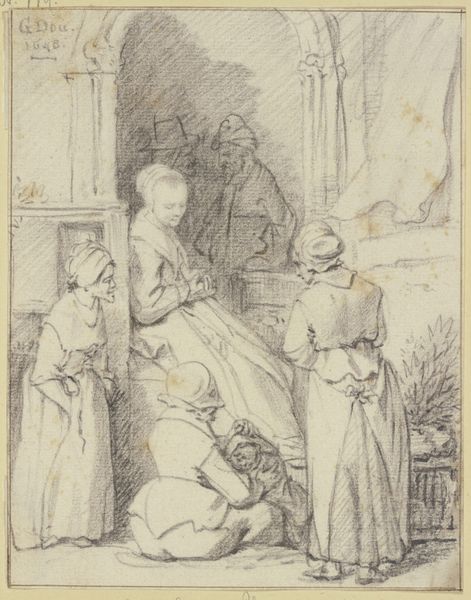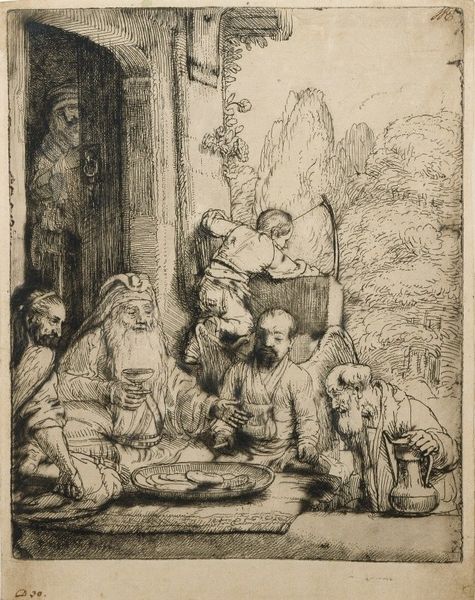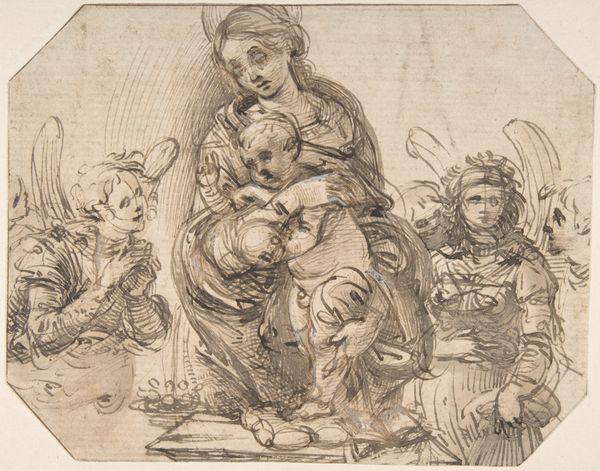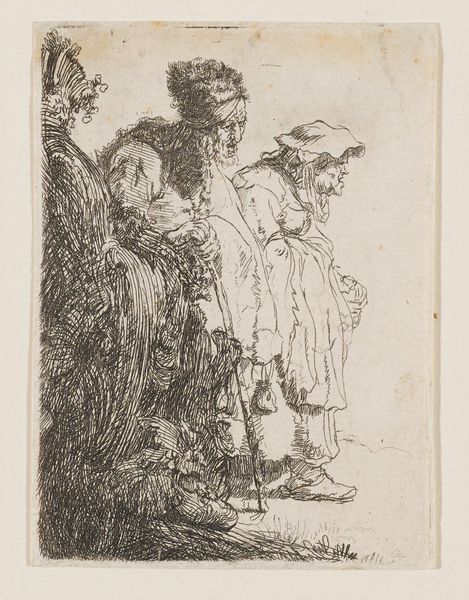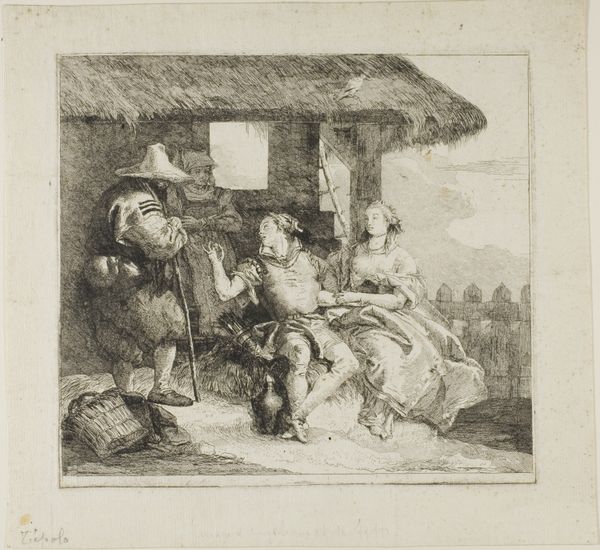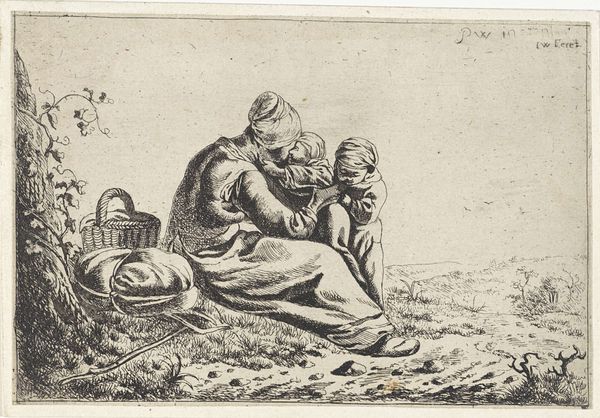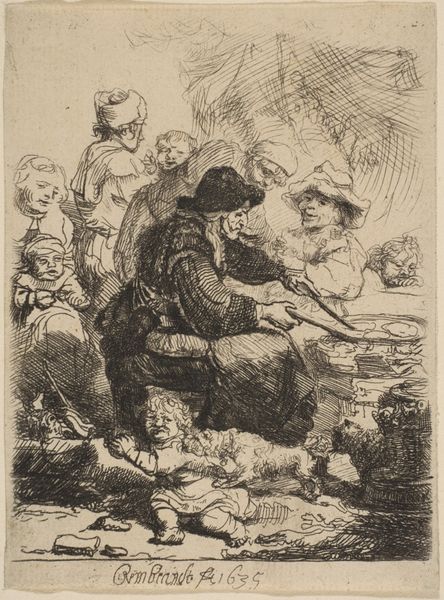
drawing, pencil, charcoal
#
portrait
#
drawing
#
pencil sketch
#
charcoal drawing
#
pencil drawing
#
romanticism
#
pencil
#
genre-painting
#
charcoal
#
watercolor
Dimensions: height 264 mm, width 380 mm
Copyright: Rijks Museum: Open Domain
Curator: Standing before us is "Four Children and an Older Girl" by John Hoppner, an artwork dating roughly between 1768 and 1810. Editor: There's a real sense of spontaneity and informality, isn’t there? It feels like we're intruding on a private moment; the soft charcoal and pencil really heighten that feeling of intimacy and impermanence. Curator: Absolutely, and Hoppner, situated within the Romanticism movement, uses this scene to probe the emotional and social fabric of childhood itself. Who are these figures? What roles are they meant to play? The artwork is a glimpse into gender dynamics within a family unit during that time. The children's placement suggests societal expectations about relationships between young girls. Editor: The application of materials here, that hazy charcoal rendering – it is worth looking at. Hoppner seems to deliberately soften any sharp details; the textures of their clothing, the stone steps, all blend into a uniform softness. It challenges those academic boundaries around 'finished' versus 'sketch'. Do we view this as a completed work, or is it more of an exercise? That impacts its value and interpretation quite significantly, I believe. And the use of charcoal itself speaks to a different class of artwork, one far from the finished, and therefore aristocratic, medium of oil. Curator: Interesting point about its categorization and social meaning! Because we must ask ourselves, "Who were Hoppner's patrons?" Was he truly critiquing those boundaries, or catering to an audience that sought sentimental representations of domestic life? Are we seeing an attempt to democratize the genre by employing humbler materials like pencil and charcoal, therefore making these themes, historically available only to wealthy patrons commissioning oils, available to others? Or were his motivations purely aesthetic? The positioning of the older girl as caregiver might offer commentary about exploitation of labor within families, specifically girl children forced into parental roles and denial of childhood in service to their siblings. Editor: You're leading me to wonder: was charcoal selected primarily for ease and cost-effectiveness or was there perhaps consideration to how these muted tones, achieved by a relatively inexpensive material, shape our reception to the artwork? It's all tied together: material limitations, artist choices, reception of those choices by an audience. Curator: Well said. Ultimately, "Four Children and an Older Girl" continues to stimulate important questions. Editor: Yes. The materials, social milieu, gender dynamics—all of this creates something that's richer and more suggestive than a surface level reading.
Comments
No comments
Be the first to comment and join the conversation on the ultimate creative platform.
